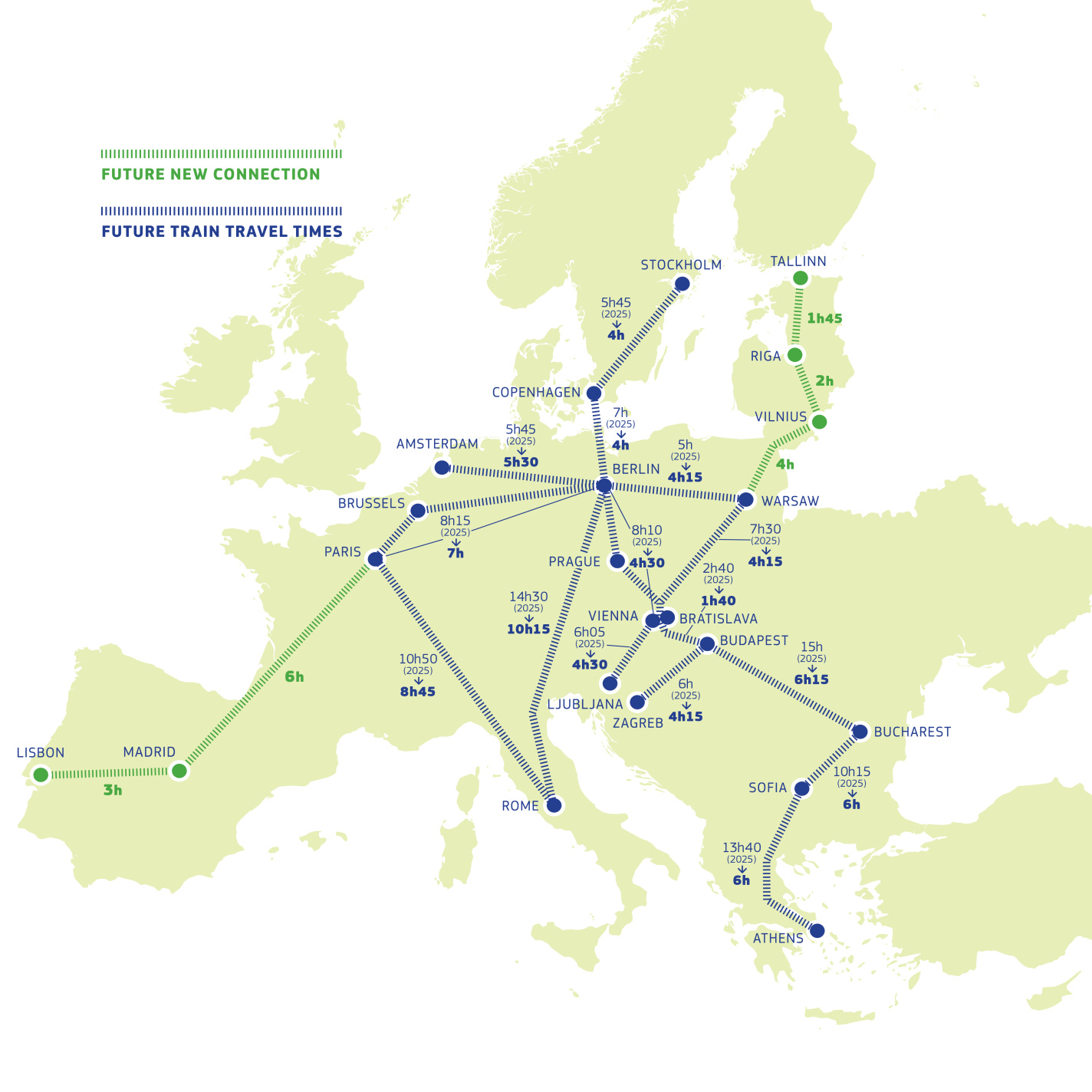EU plan for larger, faster high-speed network by 2040
The European Commission has presented a comprehensive action plan for developing high-speed rail networks in the EU with significantly shorter journey times between major cities by 2040. The plan is an integrated system – a genuine European high-speed network backed by investments of EUR 550 billion.
Announced in Brussels by Executive Vice-President Raffaele Fitto and Transport Commissioner Apostolos Tzitzikostas, the plan’s goal is to make trains the standard choice for medium-distance travel across Europe, and it marks a significant political escalation in EU transport policy, coordinating technology, market access, and cross-border train operations.
A common system for all of Europe
The initiatives in the plan aim to break with the many national systems that currently force passengers to navigate through different booking systems and uncoordinated timetables when traveling from one country to another.
The Commission’s framework rests on four pillars:
Faster infrastructure investments and full cross-border operational capability, thanks to common technical standards.
Open and free market access for operators, partly through a common, integrated ticketing system.
Technological innovation with unified rollout of ERTMS and digital systems.
Common EU governance to monitor progress and coordinate national priorities.
A genuine alternative to air travel
The Commission calls the plan a true EU high-speed network — a climate alternative to aviation for journeys under eight hours. Berlin to Copenhagen could be covered in four hours, Paris to Lisbon in one day.
Beyond journey times, the framework creates opportunities for manufacturers able to produce rolling stock certified for all countries, while ERTMS rollout and digitalisation progress in parallel. The plan also opens the door to increased competition as more operators gain access to integrated networks.
Investment time now
The plan now moves to member states, where it must be translated into national investment priorities and financing decisions through TEN-T, the Connecting Europe Facility, and InvestEU.
The 2030–2040 timeline will test Europe’s ability to deliver large-scale common infrastructure. The impressive intentions and ambitions must be translated into operational reality across 27 countries with different railway traditions, technical systems, and political priorities.
Facts
Target: 2040
Estimated investment: EUR 550 billion (total framework)
Average speed target: at least 200 km/h
Journey time reduction: up to 8 hours on main routes
Core objective: make trains the standard for medium-distance travel in Europe


